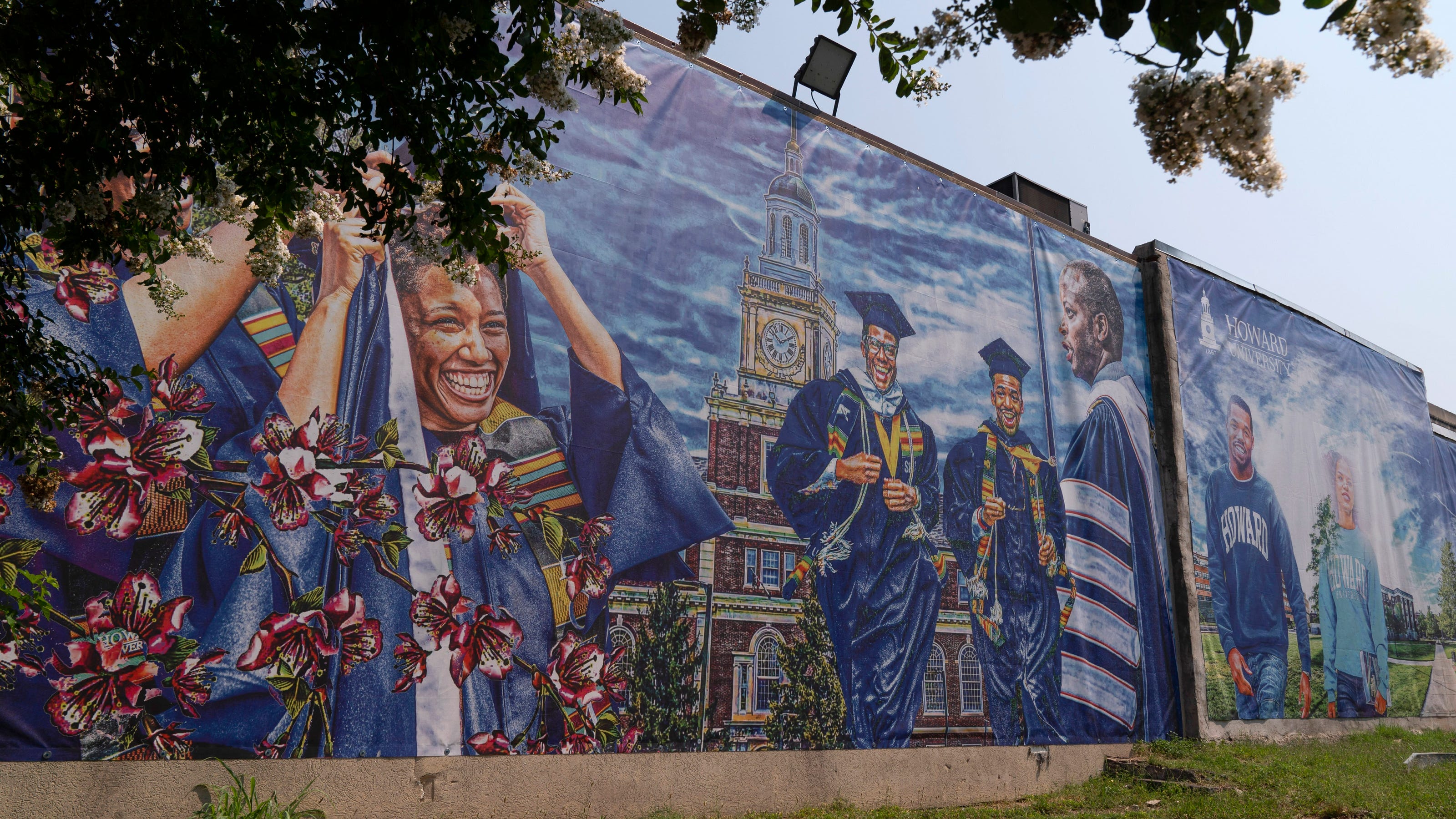The Impact Of Trump's Student Loan Policy On Black Borrowers

Table of Contents
Existing Inequalities in Higher Education Access and Outcomes for Black Students
Systemic Barriers to Higher Education
Historical and ongoing systemic racism has created significant barriers to quality education for Black students. These barriers manifest in various ways, creating a cycle of disadvantage that impacts access to higher education and ultimately contributes to higher levels of student loan debt.
- Segregation and School Funding Disparities: Decades of segregated schooling resulted in vastly unequal resource allocation, leaving many historically Black schools underfunded and under-resourced compared to their predominantly white counterparts. This disparity continues today, impacting the quality of education received and students' preparedness for college.
- Lack of Access to Advanced Placement Courses and College Counseling: Limited access to advanced placement courses and comprehensive college counseling further hinders Black students' ability to apply to and succeed in competitive higher education institutions.
- Implicit Bias in Admissions and Financial Aid: Implicit bias in college admissions and financial aid processes can disadvantage Black students, even when they possess comparable academic qualifications to their white peers.
Statistics consistently show a significant achievement gap. Black students are less likely to enroll in college and less likely to graduate than white students. This disparity contributes directly to the higher levels of student loan debt among Black borrowers, as they may need to borrow more to cover the cost of education and living expenses.
The Pre-Existing Burden of Student Loan Debt
Even before the Trump administration's policies, Black graduates carried a heavier burden of student loan debt. Several factors contribute to this:
- Lower Family Income and Wealth: Black families, on average, have significantly less wealth than white families. This limits their ability to provide financial support for their children's education, leading to greater reliance on student loans.
- Higher Rates of Borrowing for Living Expenses: Many students, particularly those from lower-income backgrounds, rely on student loans to cover not just tuition but also living expenses like rent, food, and transportation. This is especially true for Black students who may face additional financial challenges.
The average loan amounts for Black graduates are often higher than for their white counterparts. Consequently, Black borrowers face higher monthly payments and a greater risk of default, further exacerbating their financial difficulties. This pre-existing burden was significantly impacted by the subsequent policies enacted.
Specific Trump Administration Policies and Their Impact on Black Borrowers
Changes to Income-Driven Repayment Plans (IDRs)
The Trump administration implemented changes to income-driven repayment (IDR) plans that negatively affected many borrowers, potentially disproportionately impacting Black students.
- Increased Minimum Payments: Changes increased the minimum monthly payments under IDR plans, creating a financial hardship for low-income borrowers, many of whom are Black. Higher minimum payments make it harder to manage debt and can delay or prevent loan forgiveness.
- Changes to Loan Forgiveness Calculations: Modifications to the calculation of loan forgiveness amounts under IDR plans could also reduce the total amount of debt forgiven for Black borrowers, lengthening the repayment period and increasing the total interest paid.
These alterations to IDR plans directly contradicted the goals of providing accessible repayment options for those struggling financially, further hindering the ability of Black borrowers to manage their student loan debt.
Impact on Loan Forgiveness Programs
The Trump administration's approach to student loan forgiveness programs was characterized by a lack of expansion and, in some cases, increased barriers to eligibility.
- Public Service Loan Forgiveness (PSLF): The administration did not actively promote or expand PSLF, a program designed to forgive student loans for borrowers working in public service. This impacted Black borrowers disproportionately, as they are often overrepresented in public service professions.
- Increased Scrutiny of Loan Forgiveness Applications: The administration increased the scrutiny of loan forgiveness applications, potentially leading to increased delays and denials, particularly for borrowers who may have already faced systemic barriers to accessing support.
These actions effectively reduced access to loan forgiveness for Black borrowers, prolonging their debt burden and contributing to their already precarious financial position.
Long-Term Financial Consequences and the Racial Wealth Gap
The Intergenerational Impact of Student Loan Debt
Student loan debt can have a devastating intergenerational impact, particularly for Black borrowers.
- Delayed Homeownership: High student loan payments can delay or prevent Black borrowers from purchasing a home, a primary driver of wealth accumulation.
- Limited Access to Entrepreneurship: The financial burden of student loan debt can hinder Black borrowers' ability to start businesses, limiting their earning potential and economic mobility.
- Reduced Retirement Savings: Significant student loan payments often leave little room for retirement savings, further impacting long-term financial security and creating a cycle of debt for future generations.
The inability to build wealth and pass on financial security perpetuates the racial wealth gap.
Potential for Exacerbating Existing Inequalities
The Trump administration's student loan policies likely exacerbated existing racial inequalities.
- Disproportionate Impact on Black Borrowers: Statistical analysis would reveal that Black borrowers experienced a disproportionately negative impact from these policies compared to their white counterparts. This is due to the combination of pre-existing disparities and the regressive nature of some of the policy changes.
- Long-Term Economic Consequences: The long-term economic consequences of these policies are likely to continue widening the racial wealth gap, perpetuating systemic inequities for generations to come.
This disproportionate impact highlights the need for policy changes that specifically address racial disparities within the student loan system.
Conclusion: Understanding the Lasting Impact of Trump's Student Loan Policy on Black Borrowers
The Trump administration's student loan policies had a disproportionately negative impact on Black borrowers, worsening existing inequalities in higher education access, loan repayment, and wealth accumulation. These policies interacted with pre-existing systemic barriers to create a perfect storm that further entrenched the racial wealth gap. The long-term consequences of these actions are significant and will likely continue to affect Black communities for years to come.
We need to advocate for policies that directly address these racial disparities. This includes reforming student loan repayment programs to be more equitable, increasing funding for historically Black colleges and universities, and actively promoting loan forgiveness programs to ensure access for all borrowers, regardless of race. Let's work together to create fairer student loan policies and address the systemic issues that contribute to the racial wealth gap. For more information and to get involved, visit [link to relevant organization 1] and [link to relevant organization 2].

Featured Posts
-
 Epic Games Sued Allegations Of Large Scale Deceptive Practices In Fortnite
May 17, 2025
Epic Games Sued Allegations Of Large Scale Deceptive Practices In Fortnite
May 17, 2025 -
 Analiza Prosvjed U Teslinom Izlozbenom Prostoru U Berlinu
May 17, 2025
Analiza Prosvjed U Teslinom Izlozbenom Prostoru U Berlinu
May 17, 2025 -
 Seth Rogens The Studio A Perfect 100 Rotten Tomatoes Score
May 17, 2025
Seth Rogens The Studio A Perfect 100 Rotten Tomatoes Score
May 17, 2025 -
 2025s Top Crypto Casinos A Guide To Easy Withdrawals And Exclusive Bonuses
May 17, 2025
2025s Top Crypto Casinos A Guide To Easy Withdrawals And Exclusive Bonuses
May 17, 2025 -
 Trumps Multiple Affairs And Sexual Misconduct Accusations How He Won The Presidency
May 17, 2025
Trumps Multiple Affairs And Sexual Misconduct Accusations How He Won The Presidency
May 17, 2025
Latest Posts
-
 Krah Alkarasa U Barseloni Rune Proslavlja Pobednicku Titulu
May 17, 2025
Krah Alkarasa U Barseloni Rune Proslavlja Pobednicku Titulu
May 17, 2025 -
 Alexander Boulos Arrives Expanding The Trump Family Lineage
May 17, 2025
Alexander Boulos Arrives Expanding The Trump Family Lineage
May 17, 2025 -
 Barselona 2024 Rune Nadmasuje Povredenog Alkarasa
May 17, 2025
Barselona 2024 Rune Nadmasuje Povredenog Alkarasa
May 17, 2025 -
 Tiffany Trump And Michael Boulos Welcome First Child A Look At The Trump Family Tree
May 17, 2025
Tiffany Trump And Michael Boulos Welcome First Child A Look At The Trump Family Tree
May 17, 2025 -
 Runeov Trijumf Neocekivani Ishod Finala U Barseloni
May 17, 2025
Runeov Trijumf Neocekivani Ishod Finala U Barseloni
May 17, 2025
